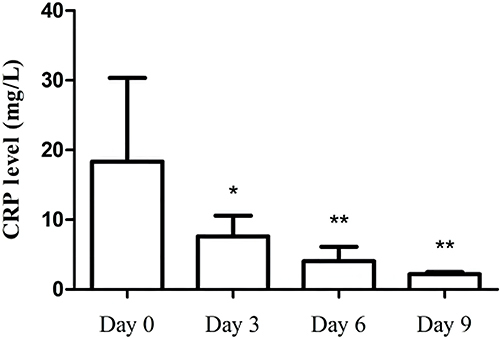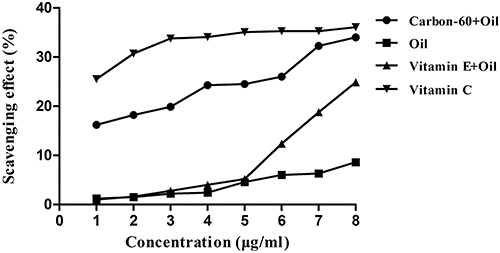Figures & data
Figure 1 The effect of C60-Oil on the migration of human neutrophils. (A) Examination of the inhibitory effect of C60 dissolved in grape seed oil on the migration of human neutrophils under a microscope (4×) (± s, n=4). Migration distance is in µm. (B) The effect of C60-Oil on the migration of human neutrophils (
± s, n=3). The three groups represent the results of examining the blood samples derived from different volunteers. * P < 0.05 vs the Oil group, while ** P < 0.01 vs the Oil group.
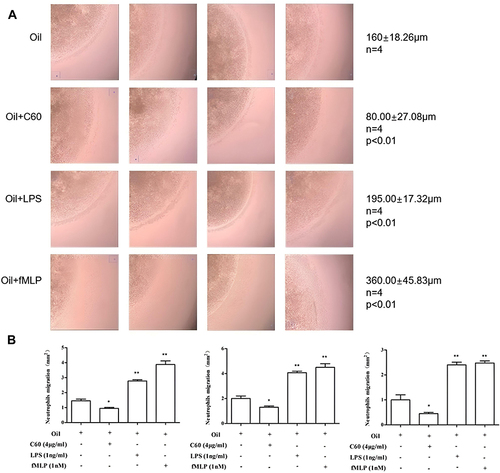
Figure 2 Effect of C60-Oil on the release of TNF-α, phagocytosis, and apoptosis by human neutrophils. (A) Effect of C60-Oil on the release of TNF-α by human neutrophils (± s, n=3). The results were obtained by examining blood samples from three different volunteers. * P < 0.05 vs the Oil group, ** P < 0.01 vs the Oil group. (B) Effect of C60-Oil on the phagocytic activity of human neutrophils (
± s, n=3). * P < 0.05 vs the Oil group, ** P < 0.01 vs the Oil group. (C) Effect of C60-Oil on the apoptosis of human neutrophils (
± s, n=3). * P < 0.05 vs the Oil group, ** P < 0.01 vs the Oil group.
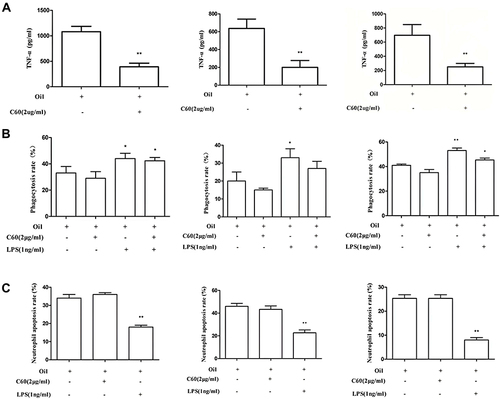
Figure 3 Effect of C60-Oil on respiratory burst in human neutrophils. (A) Effect of C60-Oil on respiratory burst in human neutrophils (± s, n=3). ** P < 0.01 vs the Oil group; # P < 0.05 vs the PMA group; ## P < 0.01 vs the PMA group. (B) Effect of C60-Oil on the foreign particle–induced respiratory burst in human neutrophils (
± s, n=3). * P < 0.05 vs the Oil group, ** P < 0.01 vs the Oil group; # P < 0.05 vs the LPS group; ## P < 0.01 vs the LPS group.
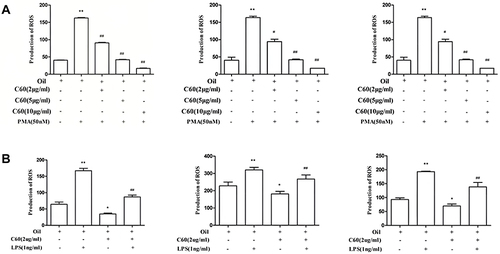
Figure 5 Oral administration of C60-Oil reduces the level of the blood inflammation marker CRP in beagle dogs. Day 0, Day 3, Day 6, and Day 9 represent before treatment, treatment for 3 days, treatment for 6 days, and treatment for 9 days, respectively (± s, n=6). * P < 0.05 vs Day 0, ** P < 0.01 vs Day 0.
